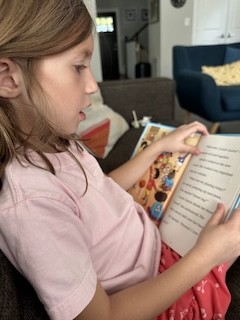Sorry about not posting for a while. I've been particularly busy, and even worked in a vacation. But my eye is back on the ball and I hope I have something of interest for you.
Recently, I received a letter: “I am writing to you because members of our state’s Department of Education believe that there is no alignment between the Common Core Standards and Reading First. Do you know of any document that aligns these two approaches for the early grades?” Clearly, the writer is concerned that the gains and improvements made through Reading First may be lost as attention shifts to the new common core, a fair point.
Unfortunately, I am not aware of any document that provides such a comparison, so I wrote my own. And here it is:
There are continuities, contrasts, and clear disagreements across the federally-supported Reading First (RF) effort and the Common Core State Standards (CCSS). I have tried to detail these below.
Continuities. Both CCSS and RF require(d) the teaching of:
1) Phonological awareness in K-1;
2) Phonics in K-3;
3) Oral reading fluency in grades 1-3;
4) Vocabulary (word meaning) K-3.
Anyone who may have anticipated a retreat from the curricular focus of Reading First will likely be disappointed. The key pillars of RF are still intact — now in the form of specific curricular goals that are to be accomplished at particular grade levels.
Discontinuities. But there are several key differences between CCSS and RF as well.
1) RF required the teaching of reading comprehension strategies; CCSS, on the other hand, does not require such teaching and emphasizes greater attention to the meaning of texts (in other words, less strategy teaching and more focus on the text content).
2) RF required that the approaches used to teach reading be proven to work through research; CCSS is, generally, silent about HOW the teaching is to proceed (instruction is treated as a matter of state/local/individual choice).
3) RF required the adoption of a core program (CCSS is silent as to how to teach or what materials to use).
4) RF required the use of screening and monitoring tests, particularly with regard to phonological awareness, phonics, and fluency, while CCSS is silent about the use of such assessments (though they encourage formative testing of reading comprehension with older kids—3rd grade and up).
5) RF required that interventions be available for children who were not making sufficient learning progress; CCSS is silent on that issue.
6) RF required extensive professional development for teachers and principals (through various state and local mechanisms, including reading coaches); CCSS is silent on the value of professional development of any kind.
7) RF was silent about the difficulty of the text that children were to work with; CCSS is quite prescriptive about the readability levels of the texts that teachers must use.
8) RF was silent about the content of the texts that children were to read; CCSS is somewhat prescriptive in encouraging greater attention to canonical literature and the classics, and to the inclusion of informational text.
9) RF was silent about technology, while CCSS requires that students be taught to use technology.
10) RF only focused on reading, but required teachers/schools to follow their state’s English language arts requirements (for writing, spelling, oral language, etc.), while CCSS specifies instructional goals for these other areas of language teaching.
Given these differences, it could mean that, under the common core, a state/district/teacher could simply do their own thing, and stop paying attention to the research, stop monitoring student learning, stop offering professional development for teachers and principals, stop using core materials, and stop their intervention programs… Although these items were required under RF, they clearly are not being emphasized in CCSS.
However, there are some pretty good reasons not to retreat from those RF staples:
a). CCSS may not have many implementation requirements, but that doesn’t mean such requirements are gone. Both IDEA and Title I funding, for example, require several of these items be address including research-based teaching and formative assessment.
b). There is going to be increased pressure to succeed and several of the RF requirements tend to help schools to succeed. States and schools are now going to be compared on the same metrics going forward, which means that there will be even greater accountability pressure on teachers, principals, state superintendents, and now even on the governors themselves (letting everybody do their own thing, no matter how greatly such practices may deviate from research findings may not be something that those being evaluated will be willing to accept.
c). Most state data showed Reading First was supporting better reading achievement for the kids served, so why not build on existing knowledge and tools already available rather than starting all over again?







Comments
See what others have to say about this topic.